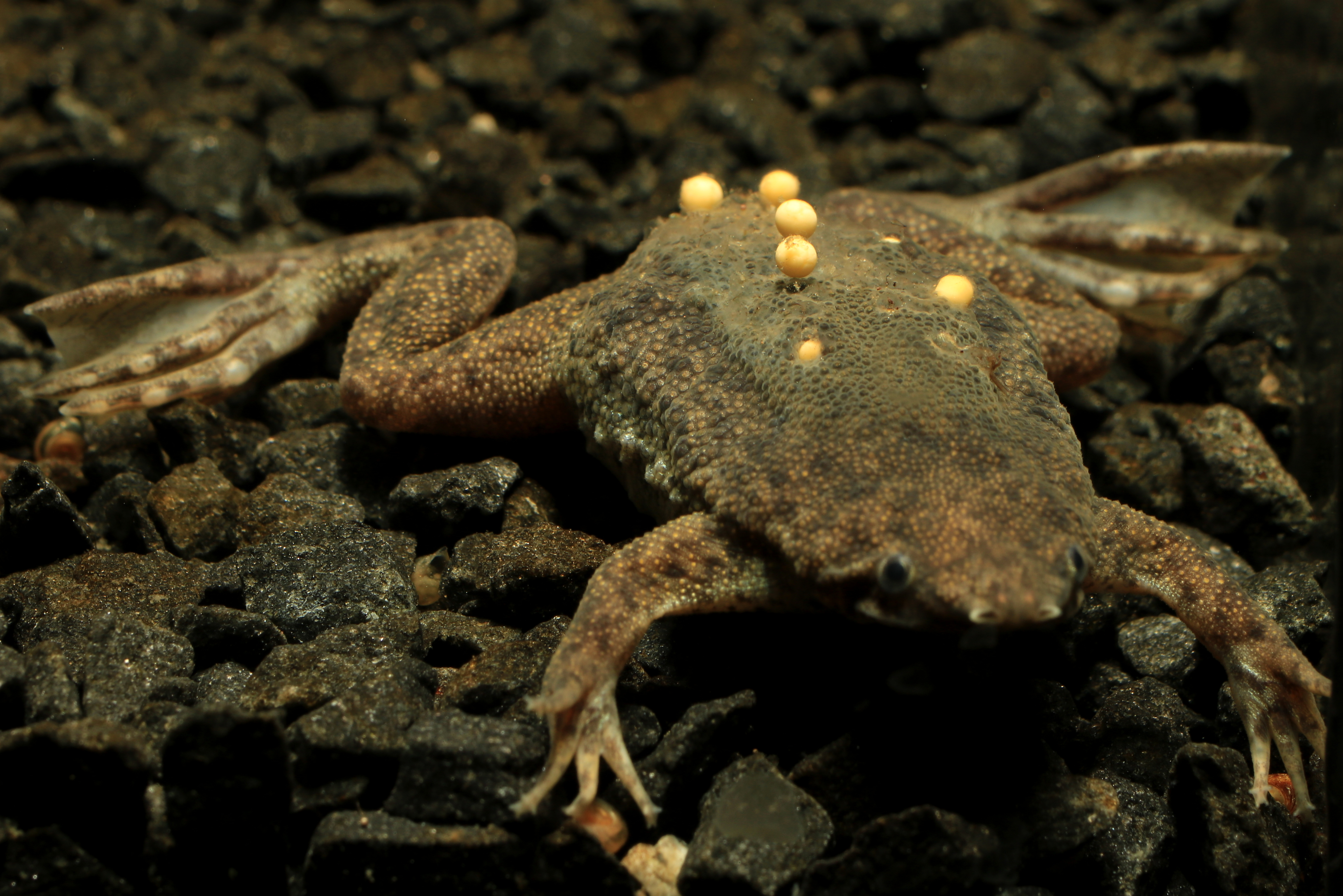Suriname Toad
(Pipa pipa)

Description
The common Surinam toad or star-fingered toad (Pipa pipa) is a species of frog in the family Pipidae found in Bolivia, Brazil, Colombia, Ecuador, French Guiana, Guyana, Peru, Suriname, Trinidad and Tobago, and Venezuela. Its natural habitats are subtropical or tropical moist lowland forests, subtropical or tropical swamps, swamps, freshwater marshes, and intermittent freshwater marshes. It is threatened by habitat loss. The common Surinam toad is similar in appearance to a mottled brown leaf, and is almost completely flat. Its feet are broadly webbed with the front toes having small, star-like appendages. Males can grow up to 154 mm, whereas females can reach up to 171 mm. Females can be distinguished not only by their length but also by their ring-shaped cloacas, visible when they are ready to breed. Their skin color is mostly light brown with some darker spots on the back, so they can easily avoid predators. The head of the Pipa Pipa has a very flat appearance and is triangular. It also has very small black eyes, that are located on the top of their head. These are not the only different characteristics, the toads have very long fingers that end in four star-shaped lobes. The Surinam toad has no teeth and no tongue. The Suriname toad is found in slow-moving streams and rivers throughout South America. The species is omnivorous. Its diet consists mostly of invertebrates, such as worms, insects, crustaceans and small fishes. The toad has sensory organs in the fingertips which help them catch their prey. Suriname toads are best known for their reproductive habits. Unlike the majority of toads, the males of this species do not attract mates with croaks and other sounds often associated with these aquatic animals. Instead, they produce a sharp clicking sound by snapping the hyoid bone in their throats. The clicking sound resembles metallic noises. The average rate of these clicks is four clicks per second, consisting of blocks of 10 to 20 seconds per period. Thereafter, the male will grab the front legs of the female, causing the clochea and the skin of the female to swell, this is called the amplexus. The partners rise from the floor while in amplexus and flip through the water in arcs. The couple will swim around in the water until they have to swim to the surface to catch their breath. Afterwards, they will swim back down to the bottom of the water. There the male will lay on his back, with the female on top of him on her stomach.
Taxonomic tree:







